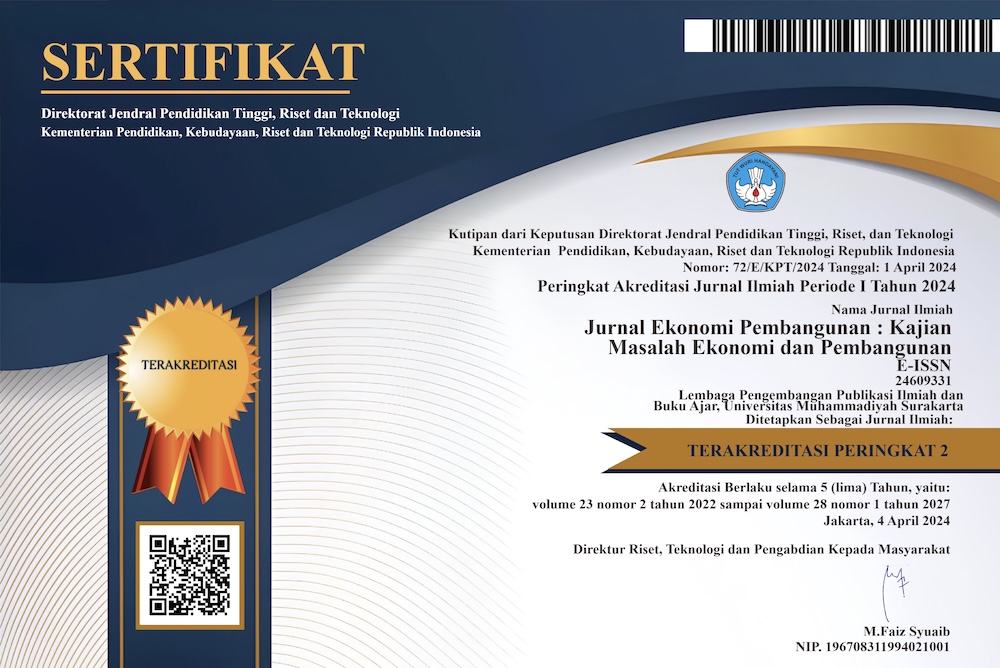Women’s Literacy Rate and Women’s Labor Participation in ASEAN
DOI:
https://doi.org/10.23917/jep.v23i1.17183Keywords:
women’s literacy rate, women’s labor participation, panel dataAbstract
Women have an essential contribution to economic growth and development. However, according to data, the Gender Inequality Index (GII) is still relatively high in developing countries, so special attention should be paid to aspects of women’s empowerment, health, and participation in the labor market as an indicator in measuring GII. In women’s empowerment, women’s education and women’s literacy are thought to affect women’s labor force participation. This study aims to examine and analyze the effect of women’s literacy rates on female labor force participation in ASEAN countries from 2010- 2017. The method used to analyze the effect on the model is the static panel data method. The results show that countries with high female literacy rates also have high female labor participation rates. The results help economists and policymakers evaluate measures to optimize women’s labor market decisions and empower women by improving women’s literacy rates.















